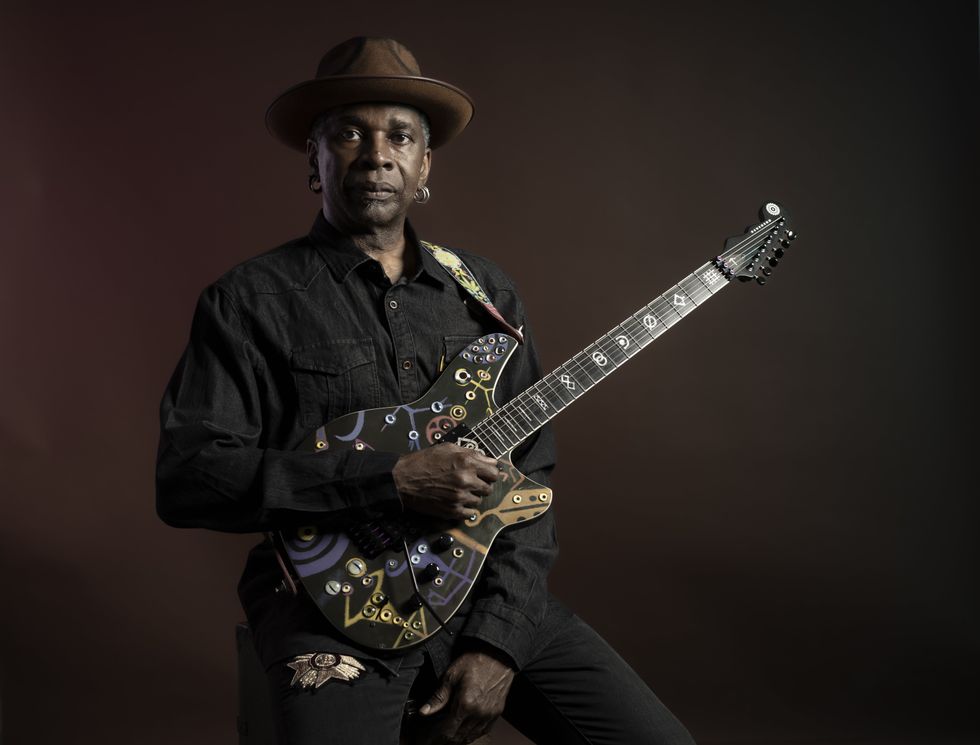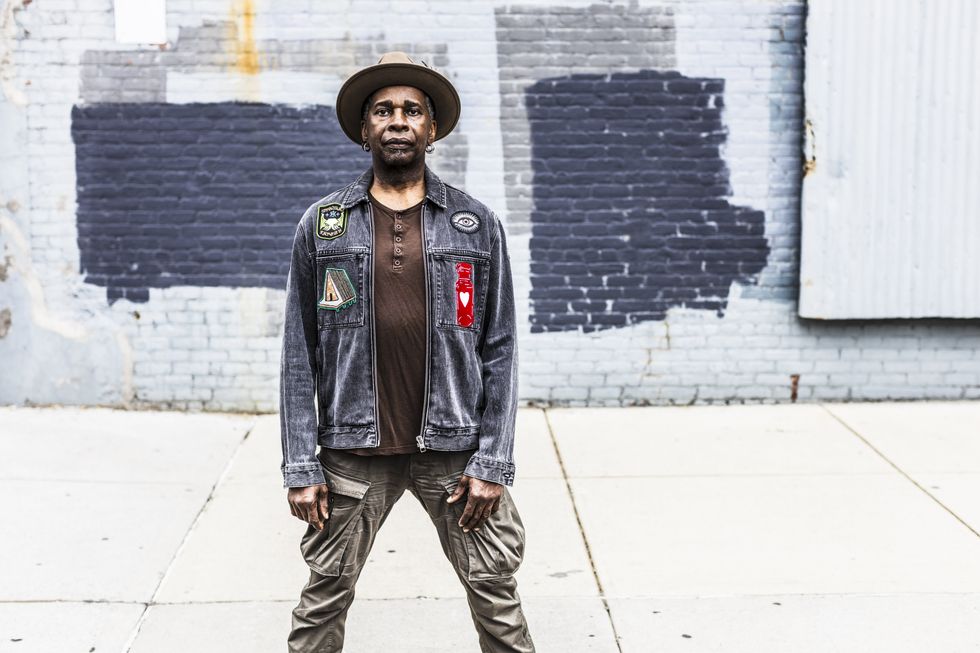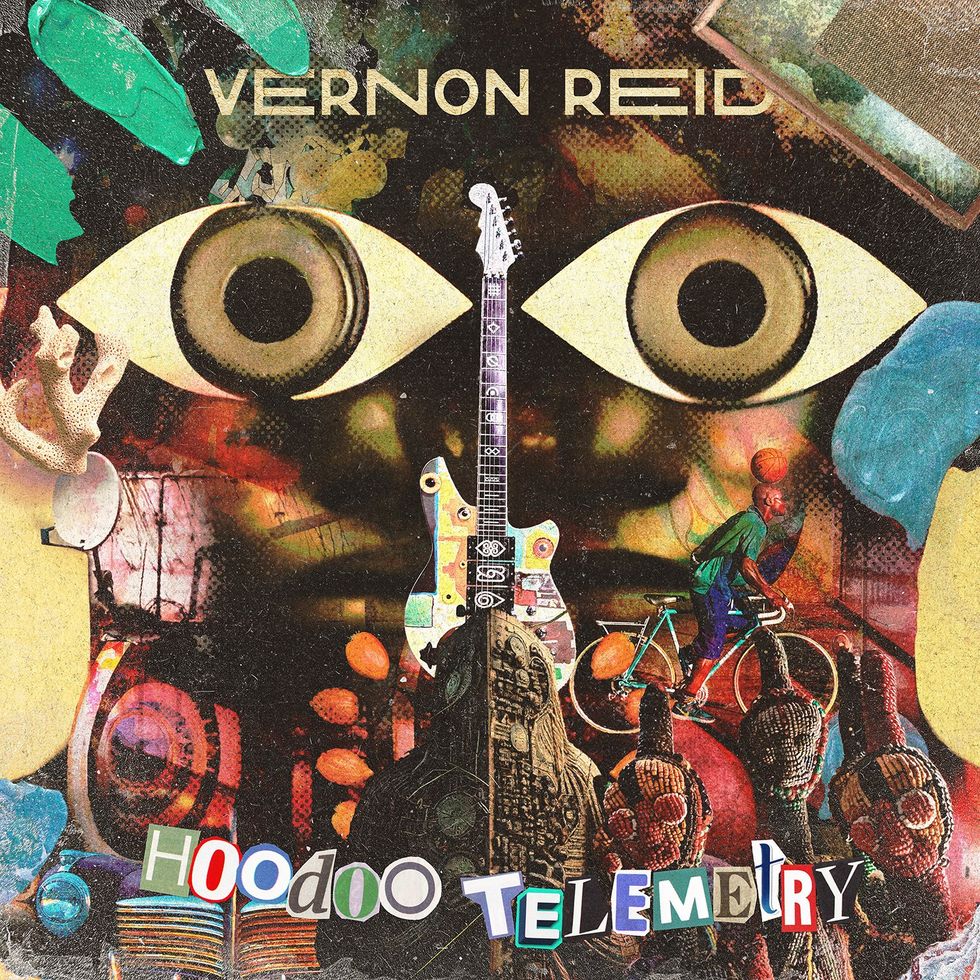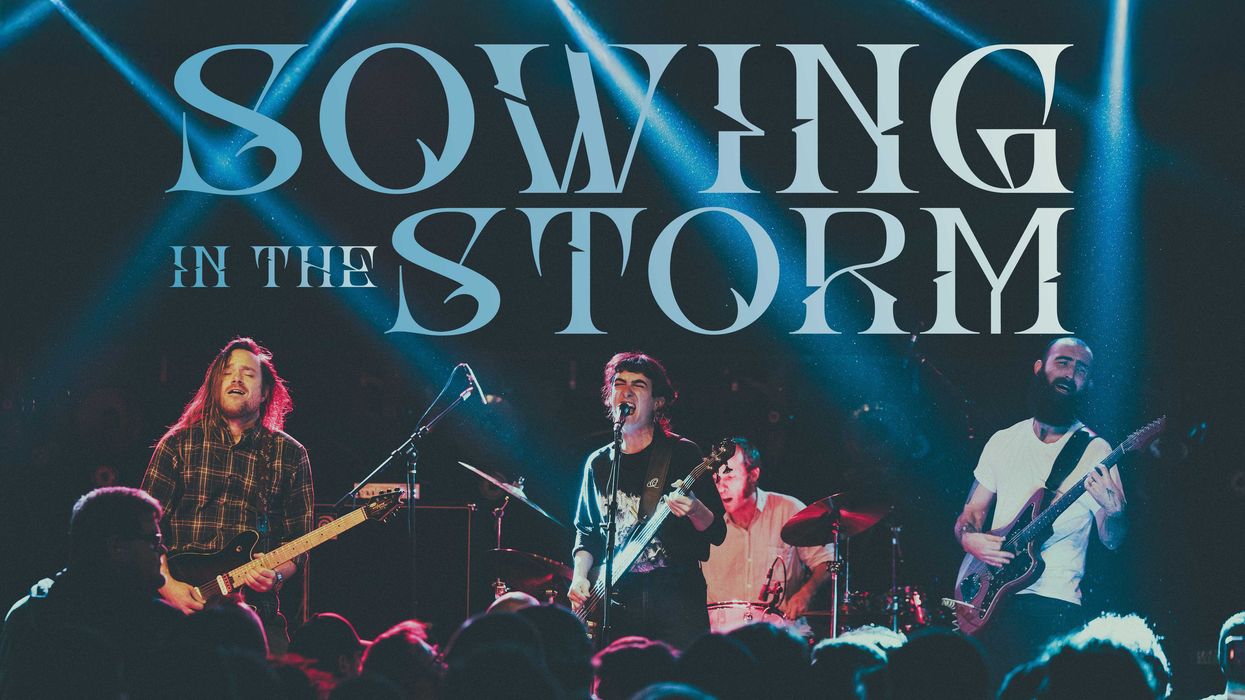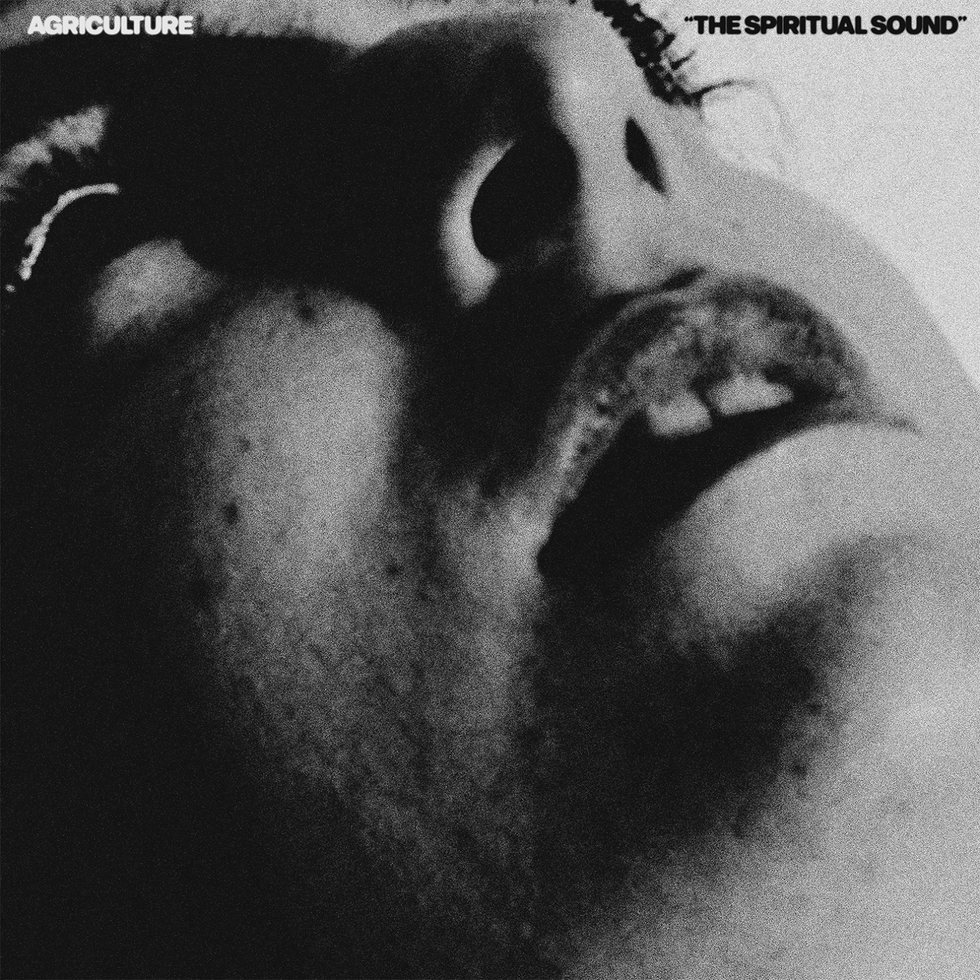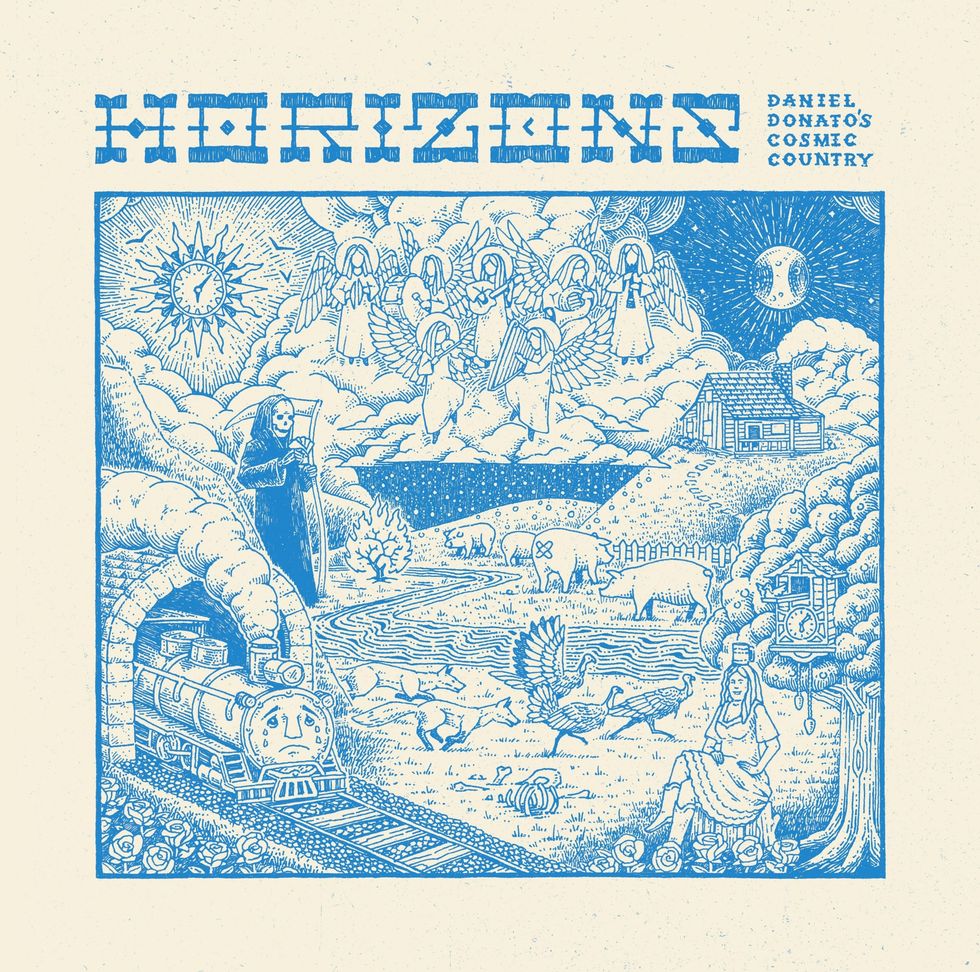When it came time to record Coheed and Cambria’s latest release, Vaxis – Act III: The Father of Make Believe, guitarist and singer Claudio Sanchez first sat down and listened to their last album, Vaxis – Act II: A Window of the Waking Mind, and realized he wanted to recapture some of that winning formula. “Even though Window was a Covid baby, and there were hurdles that we had to face, I was so proud of that record,” he attests. With the exception of cutting the drums in a Los Angeles recording studio, A Window of the Waking Mind was a remote project, a new experience for Coheed and Cambria, but one worth repeating, according to Sanchez. “The material on The Father of Make Believe has the same DNA, so I was like, ‘Let’s just copy what we did last time, and we’ll deal with the future later.’"
For 25 years, Coheed and Cambria has been forging a musical path that tears at the very fabric of categorization as they’ve built a mythological universe based on a series of science-fiction comic books called The Amory Wars, created by Sanchez and Chondra Echert, and published by Evil Ink Comics. The multifaceted lyrical arc of their albums that follows the comics is quite possibly the longest-running concept story in music history, with each studio album detailing a chapter in the saga. Along with their genre-hopping approach to songwriting, The Amory Wars throughline has allowed Coheed and Cambria to carve out a unique niche for themselves by being hard to pigeonhole stylistically and brazenly fantastical lyrically.
SoundStream
Formed in Nyack, New York, in the early 2000s by Sanchez, lead guitarist Travis Stever, and drummer Josh Eppard, Coheed and Cambria also includes current bassist Zach Cooper. The band first gained attention with their debut album, The Second Stage Turbine Blade (2002), which introduced The Amory Wars storyline. Their sophomore album, In Keeping Secrets of Silent Earth: 3 (2003), established their presence as a progressive rock act, combining elements of pop, heavy metal, post-hardcore, and emo, and reached No. 52 on the Billboard 200. With the exception of 2015’s The Color Before the Sun, all of Coheed and Cambria’s subsequent albums draw on The Amory Wars narrative. Their newest is the third part of a series that was introduced with Vaxis – Act I: The Unheavenly Creatures (2018), and Act II featured “Shoulders,” the first song in their career to reach the top 10 on Active Rock radio charts.

Claudio Sanchez (with drummer Josh Eppard behind) and his Evil Instruments Jackhammer, which is manufactured by Dunable for the guitarist’s own brand.
Photo by Stuart Garneys
Musically, The Father of Make Believe fits neatly into the band’s existing sonic milieu, with yowling guitars, drums that beat like cannon waves, and Sanchez’s ethereal, high-pitched, and powerful voice centering conceptual moments both tranquil and turbulent. Where the album pioneers new territory is in how Sanchez reorients the lyrics and assumes the role of the main antagonist—he literally casts himself as the Father of Make Believe, questioning the efficacy of the fictional world he’s constructed with The Amory Wars. Besides lead-off single “Blind Side Sonny”—arguably their most aggressive track to date—and “Meri of Merci,” which were written in Paris, all of the songs on The Father of Make Believe were written in Sanchez’s home studio in Brooklyn, New York. Eppard’s drums were cut in Woodstock, New York, Cooper tracked bass in Florida, and Sanchez and Stever put their guitar parts together in Brooklyn. Sanchez mixed the record in LA with producer/engineer Zakk Cervini, who also produced/mixed A Window of the Waking Mind.
“As I get older, I’m recognizing how it feels good to be a little more transparent.”
One thing that sets The Father of Make Believe apart from the band’s past records is that Sanchez is writing more transparently about his own life and its influence on the narrative. As a result, he’s recently reflected on whether or not The Amory Wars storyline is an obstacle to reaching a broader audience. “I feel like there’s this limitation when people see this big grandiose concept tied to these records,” he admits. “I’m really curious about how this band would be perceived if the concept had not been a diversion. As cool as The Second Stage Turbine Blade sounds, it’s just a part my dad worked on in a factory when I was growing up, and the dragonfly [Turbine album cover artwork] resembles a syringe because my dad was a recovering addict. These are topics I wasn’t ready to talk about at 22 years old, so it was very easy for me to construct this narrative that I could use as a diversion. But as I get older, I’m recognizing how it feels good to be a little more transparent.”
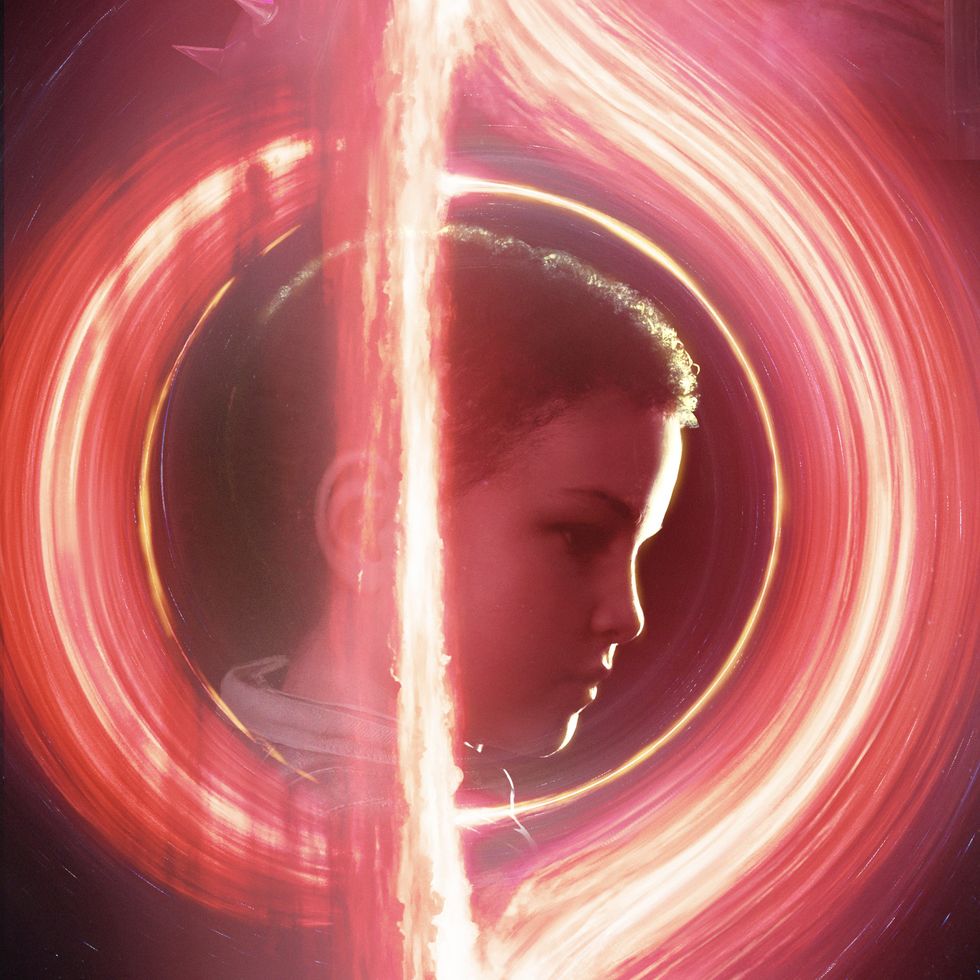
Vaxis – Act III: The Father of Make Believe is the third part of a series the band started back in 2018 with Vaxis – Act I: The Unheavenly Creatures.
Such realizations presented a challenge when it came to visualizing a follow up to A Window of the Waking Mind. And while Sanchez’s own desire to be more transparent, and the success of that album, presented distinct hurdles, recent personal losses and the deeply introspective questions that arose from grieving lost loved ones really affected his creative process. “My uncle passed away and his wife was widowed,” he says. “It reminded me of my grandfather’s situation when his wife passed away and he ended up living 35 to 40 years of his life without my grandmother. It just got me thinking about what life would look like if I passed away.” Faced with his own mortality, Sanchez couldn’t help interrogating Coheed and Cambria’s achievements thus far. “As death becomes very real, I started questioning where I’m at in my life and asking, ‘Is Coheed entirely how I envisioned it?’”
“Everything is a tool.”
Sanchez relies on a Mac/Pro Tools setup for recording in a Brooklyn home studio that also features a lot of outboard gear, including preamps, compressors, and combo amps. “If I’m trying to drive an actual amp, my main one is the Peavey Special 130,” he explains. “For clean tones, I have a Dual Reverb and a Blues Junior [both Fender], as well as a vintage Ampeg J-12 Jet.” He also employs stereo reel-to-reel and cassette four-track tape machines to help him break-up his signature crunchy rhythm sounds.
All that outboard gear doesn’t necessarily mean Sanchez is a purist when it comes to guitar tone. What listeners hear on Coheed and Cambria records is ultimately a hybrid of analog and digital. “I do use plugins here and there,” he admits. “We’re usually going direct with plugins so that when we go to LA for mixing, we can re-amp. There’s some cool dimension that comes out of the immediacy of the plugins mixed with the air from these amplifiers.” Recently, he’s even started incorporating Universal Audio UAFX guitar pedals into his signal chain. His reasoning for combining digital and analog resources to achieve the desired tone results is quite simple and based on some insight from a friend. “Somebody told me years ago, ‘If Jimi Hendrix was around right now, do you think he wouldn’t use all this stuff, being as creative as he was?’ There’s some wisdom in that. Everything is a tool.”
Claudio Sanchez's Gear
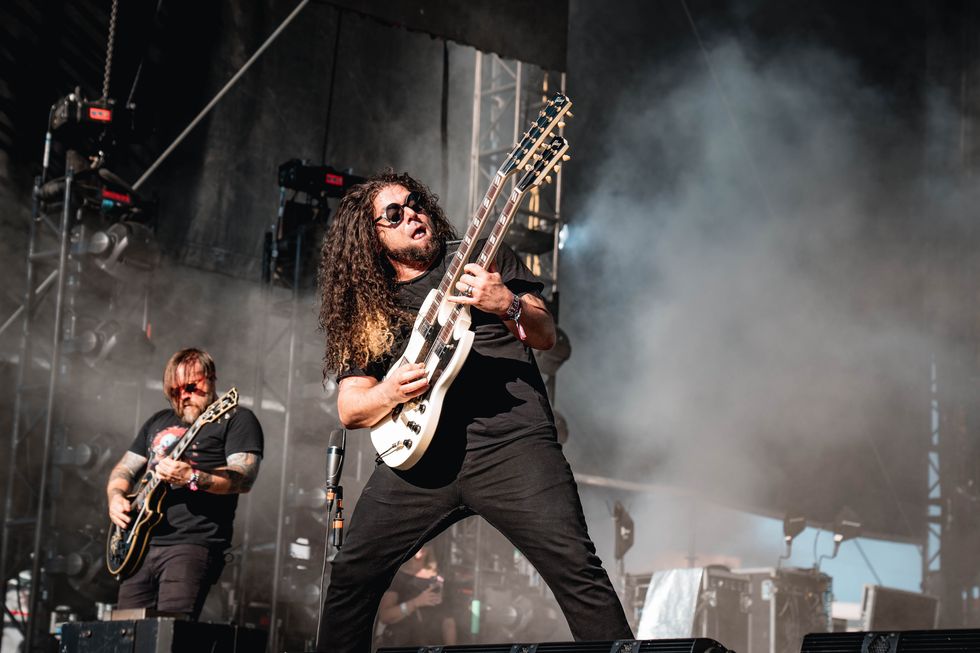
A pair of Gibsons for Coheed. Sanchez sports his white EDS-1275, while guitarist Travis Stever opts for a black Les Paul.
Photo by Stuart Garneys
Guitars
- Evil Instruments Jackhammer
- 1980 Gibson E2 Explorer
- Gibson EDS-1275 Doubleneck
- 1963 Gibson LP Custom SG
- Gibson Flying V Custom
- Gibson Baritone Explorer
- Gibson SG Special
- Gibson Explorer ’76 Reissue
- Gibson J-45 acoustic
- Taylor 512e Acoustic
Amps and Effects
- Fractal Audio Systems Axe-Fx III
- Fractal Audio FC-12 Mark II
- Mission Engineering Expression (pedals)
- Matrix GT-1000FX
- Shure Axient Digital wireless system
- Radial JX-42
- Mesa Boogie Road King 4x12
Strings and Picks
- Ernie Ball Slinky RPS (.010–.046)
- Dunlop Tortex .73 mm
Sanchez’s main “tool” is a signature model Jackhammer guitar he designed on his iPhone; it’s currently manufactured by Dunable under his own Evil Instruments brand. “I was on a plane to see my in-laws in Florida and started collaging the body type on my phone,” he recalls. “I went to Kevin Allen, my tech for many years who is also a luthier, and asked him, ‘Can we mimic the scale profile using my E2 [Explorer II] and make one just to see if this is worth exploring?” Allen built a working prototype that Sanchez took on the road, affirming his concepts. “I was like, ‘We can make this happen. Let’s find somebody who’s got the infrastructure to do it.’” They met with Dunable in California and proposed the idea to them—the rest is history. “I wanted to make sure it was something that I would play. I didn’t want it to just be something to put my name on. I want to play it.” The imports come stock with Alnico 5 humbuckers, and the American custom models feature the Bareknuckle pickups that Sanchez typically installs. While the body looks like a cross between an Explorer and a Flying V, the headstock is similar to a traditional three-and-three SG headstock.
Sanchez applies the same intuitive design acumen to his songcraft and says he basically has the identity of each song complete from his home studio, except for the drums. “I don’t play drums like Josh does,” he chuckles. “I’m also not trying to exclude their identities from the final pieces, so even though I might have some idea about where a rhythm sits, I’ll pass it around and get everyone’s feedback.” The most delicate balancing act is trying to find a middle ground between the guitars and the vocals. “That’s one of the big reasons why Trav comes in here [his home studio],” he explains. “So we can make sure we’re not stepping on the vocal too much, which is one of the hard parts about what Travis does. His frequency range is right where the vocal sits. We try to find a place where his identity can be expressed but also doesn’t take attention from away from what’s being sung because that guides the experience of the listener.”
“I wanted to make sure it was something that I would play. I didn’t want it to just be something to put my name on.”
Vocal and guitar interplay is clearly Sanchez’s wheelhouse. Though he was a guitar player at first, he considers himself more of a songwriter than perhaps anything else. “When I became a singer, I stopped learning how to play guitar and learned instead how to write songs,” he explains. “In high school, my dad got me a cassette four-track, and that changed my world, even more so than the guitar, because I started thinking about melodies and song structures and trying to create things.” In his first band, before he was a singer, he learned to play by writing songs, mostly eschewing covers (exceptions were made for “Blister in the Sun” by Violent Femmes and “She” by the Misfits). As far as influences go, he listens to just about everything, including classic rock, hair metal, death and thrash metal, grunge, and pop music. “When I write music, I never want to limit myself,” he confesses. “I never want a genre to dictate what my creative output is going to be. It’s just more colors for the palette.”
That kind of stylistic non-conformity is a hallmark of Coheed’s brand, but it can be equal parts blessing and curse according to Sanchez. “I imagine it’s a little perplexing to go through one of our records,” he admits. “But being a unique entity has a lot to do with the longevity of the band, and it’s afforded us really interesting tours, from Slipknot and Linkin Park to Primus and Incubus.” The musical ambidexterity that makes Coheed and Cambria unique among their peers probably also works to their advantage in the digital age of streaming and curated playlists. “Streaming is much different than when you had to take a chance on a record,” he says. “Right now, you can try as much music as you want with a subscription, which works in our favor because there’s versatility in Coheed that mimics the idea of a diverse playlist, not because we’re thinking that way. It just feels like it’s moved in our direction, and people are willing to explore more.”
YouTube It
Sanchez works the doubleneck last summer during “Welcome Home,” from Good Apollo, I'm Burning Star IV, Volume One: From Fear Through the Eyes of Madness.
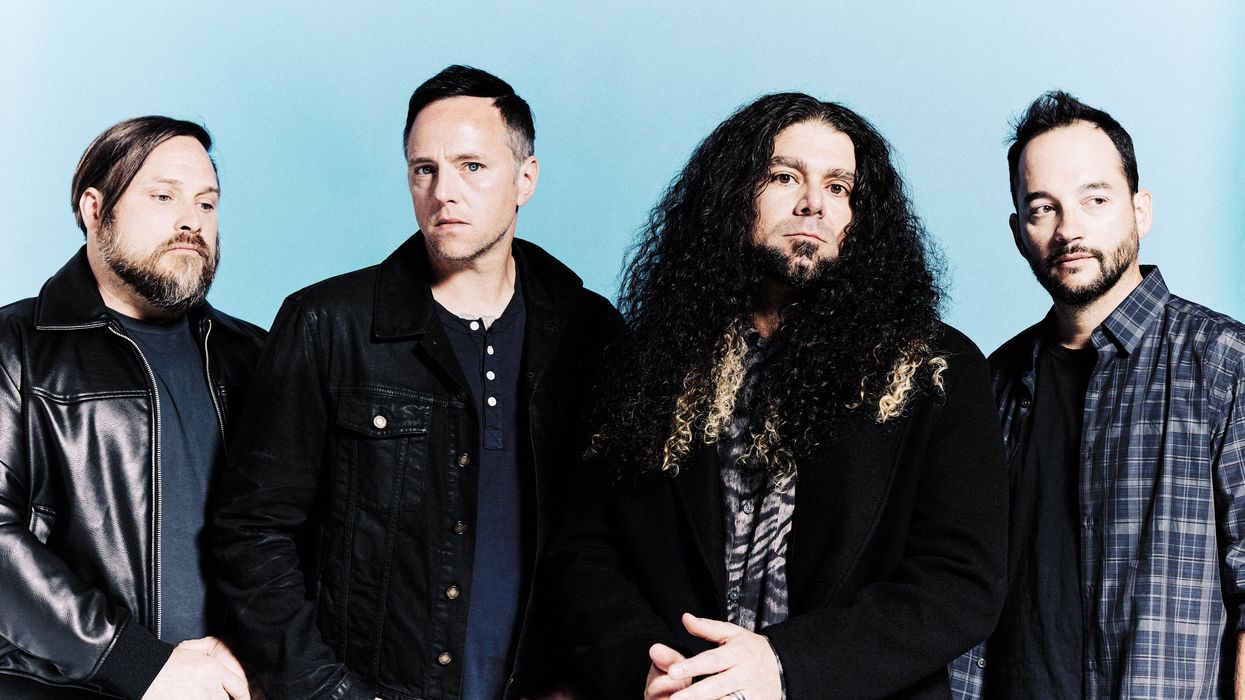





![Rig Rundown: AFI [2025]](https://www.premierguitar.com/media-library/youtube.jpg?id=62064741&width=1245&height=700&quality=70&coordinates=0%2C0%2C0%2C0)












 Shop Scott's Rig
Shop Scott's Rig



![Devon Eisenbarger [Katy Perry] Rig Rundown](https://www.premierguitar.com/media-library/youtube.jpg?id=61774583&width=1245&height=700&quality=70&coordinates=0%2C0%2C0%2C0)


